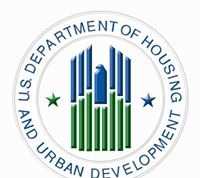First American Chief Economist’s Potential Home Sales Model Decreases 2.1 Percent In November
The price of admission for homeownership will rise, in part because of the leverage-assisted asset inflation caused by the low-rate environment says Chief Economist Mark Fleming
Santa Ana, Calif., – December 18, 2015 – (RealEstateRama) — First American Financial Corporation (NYSE: FAF), a leading global provider of title insurance, settlement services and risk solutions for real estate transactions, today released First American’s proprietary Potential Home Sales model (previously called the Existing-Home Sales Capacity model) for the month of November 2015, which provides a gauge on whether existing-home sales are under or over their long-run potential level based on current market fundamentals. For the month of November, the model showed that the market potential for existing-home sales decreased by 2.1 percent compared to October and decreased by 8.0 percent compared to a year ago.
According to the model, the seasonally adjusted, annualized rate (SAAR) of potential existing-home sales is up 72.6 percent from the low point reached in February 2009*. The potential home sales rate in the model decreased by 118,500 (SAAR) in November. The rate of potential home sales in the model is down 810,000 (SAAR) from the most recent peak in February 2014.
The model’s current underperformance gap is an estimated 147,000 (SAAR), which is significantly less than the sales potential gap of 1.7 million existing-home sales in February 2014.
Chief Economist Analysis: The Price of Admission for Homeownership Will Rise
“The model indicates the housing market’s potential for existing-home sales continued to pre-adjust to the increase in the Federal Fund Rate announced yesterday by the Federal Reserve. While the increase in the short-term rate only indirectly influences long-term interest rates, the Fed signaled a continued modest path of rate increases,” said Mark Fleming, chief economist, First American. “According to the model, a modest path of rate increases will moderately increase the cost of mortgage financing and reduce the pace of house price appreciation in 2016. The rise in interest rates combined with a continued, yet slower, pace of appreciation were the most important market fundamentals that reduced the potential home sales rate in the model this month.”
“Earlier this week, I published an analysis of the change in affordability in 2016 for first-time homebuyers titled, ‘The Price of Admission to Homeownership.’ Until yesterday, rates had not increased since before the iPhone was invented. Yet, the impact of yesterday’s events on first-time homebuyer affordability moving forward remains small,” said Fleming. “Our Real Estate Sentiment Index (RESI)indicated that first-time homebuyers are the most likely to be impacted by rising rates, but that their home-buying decisions will likely be unaffected until mortgage rates surpass 5 percent. Existing homeowners, mostly with fixed-rate loans, will be less impacted by any potential increase in long-term mortgage rates.”
Fleming added, “With or without Federal Reserve intervention, the income a first-time homebuyer will need to buy today’s starter home a year from now will increase. Yet, I estimate the difference to be only $700 dollars more in 2016 as the Fed starts to raise rates. The price of admission for homeownership will rise, in part because of the leverage-assisted asset inflation caused by the low-rate environment. The time for rock-bottom mortgage rates needed to end and the end of this era will only have a very modest impact on affordability for the first-time homebuyer.”
“I expect existing-home sales to reach 5.5 million (SAAR) by the end of 2016. Housing demand will be dominated by emerging ethnically diverse first-time homebuyer households, as older existing homeowners will have a reduced incentive to sell their homes in a higher rate environment,” said Fleming.
*Previous Potential Home Sales releases referred to November 2011 as the low point of sales. The model used to generate existing-home sales potential has been enhanced to more accurately reflect the dynamic relationships between sales, prices, interest rates and the user-cost of housing, resulting in a model that more accurately reflects past conditions.
Next Release
The next Potential Home Sales model will be released on January 20, 2016 with December 2015 data.
About the Potential Home Sales Model
Background information on the First American Potential Home Sales model (previously called the Existing-Home Sales Capacity model) is available here.
Disclaimer
Opinions, estimates, forecasts and other views contained in this page are those of First American’s Chief Economist, do not necessarily represent the views of First American or its management, should not be construed as indicating First American’s business prospects or expected results, and are subject to change without notice. Although the First American Economics team attempts to provide reliable, useful information, it does not guarantee that the information is accurate, current or suitable for any particular purpose. © 2015 by First American. Information from this page may be used with proper attribution.
About First American
First American Financial Corporation (NYSE: FAF) is a leading provider of title insurance, settlement services and risk solutions for real estate transactions that traces its heritage back to 1889. First American also provides title plant management services; title and other real property records and images; valuation products and services; home warranty products; property and casualty insurance; and banking, trust and investment advisory services. With revenues of $4.7 billion in 2014, the company offers its products and services directly and through its agents throughout the United States and abroad. More information about the company can be found at www.firstam.com.
Contacts
Investor Contact
Craig Barberio
Investor Relations
714.250.5214
Media Contact
Marcus Ginnaty
Corporate Communications
First American Financial Corporation
714.250.3298














